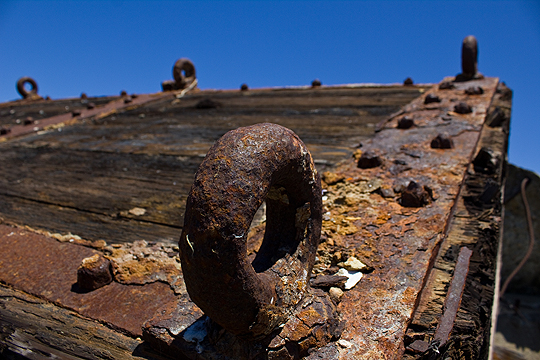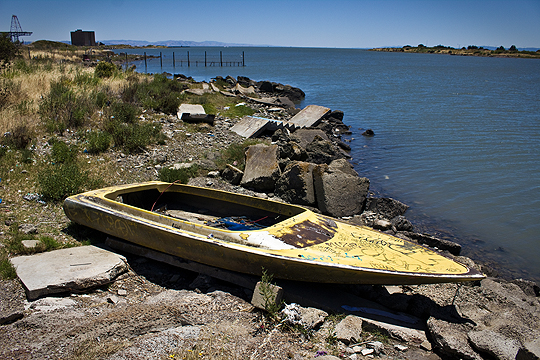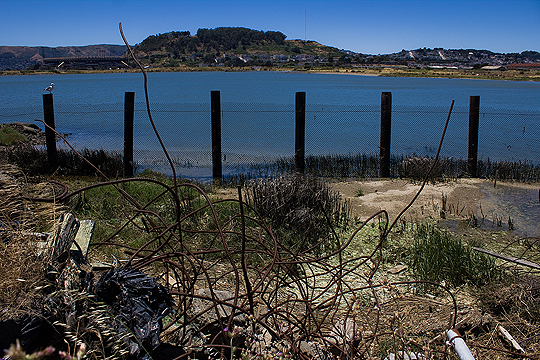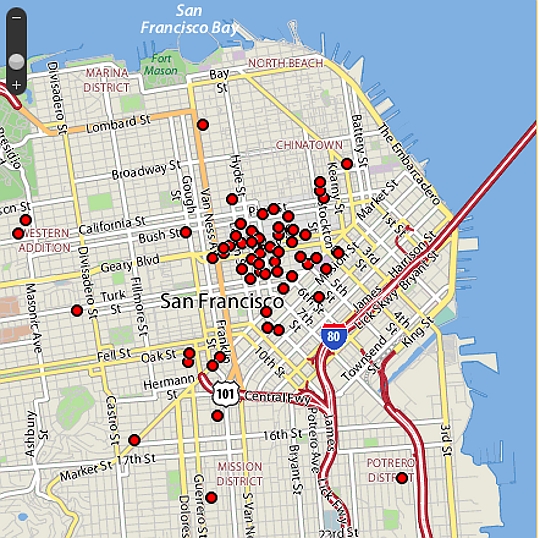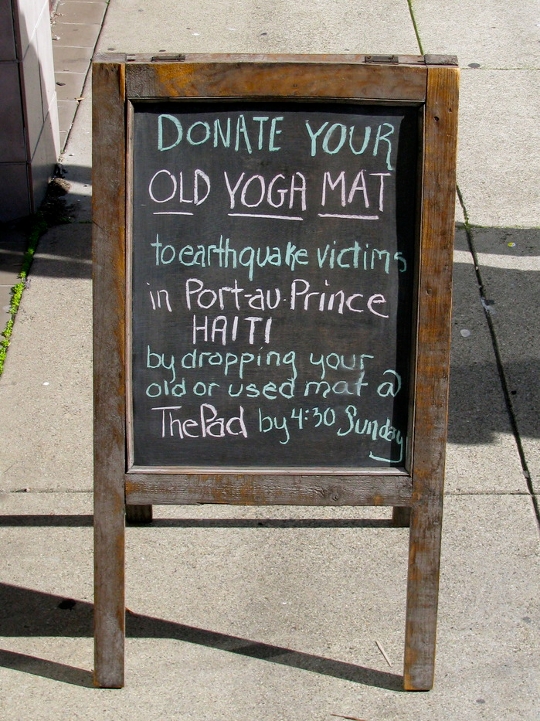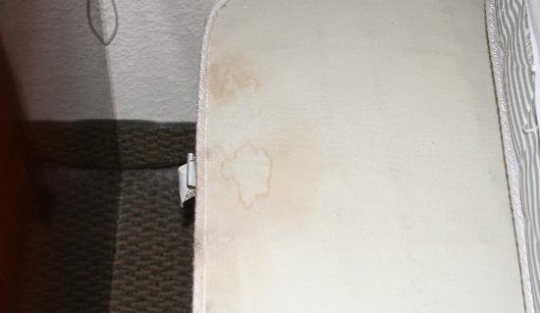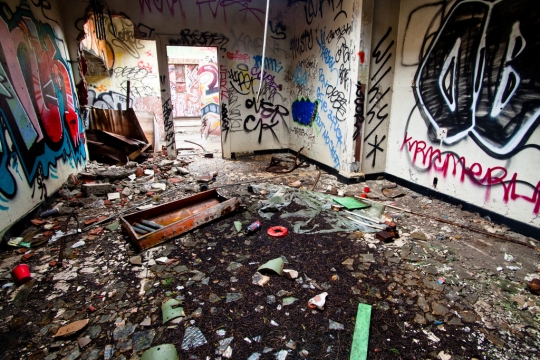If the posted signs of environmental hazards are to be believed, it’s advised that you don’t visit the southeast industrial coast of San Francisco.
I was there as part of an ongoing video project, but despite the joys of discovering hulks of decaying artifacts and debris, the warnings about tainted shellfish (not to mention the international sign for “radiation”) definitely made me think twice about having crawled through that hole in the fence.
After a few hours in the hot sun I began to think I could taste the toxins in the back of my throat. But surely, the hazard was overblown. Just look at all the water fowl, feasting on organisms that have marinaded in the same stuff I’m stepping in. They seem fine, and I’m more robust than a sea gull, even at my age.
I reminded myself that I’d begun my own trip that day at Candlestick Point Recreation Area just to the south, which bears no such pollution signs, and come on: you gonna tell me the fishermen there weren’t reeling in fish that had also swum through these tainted waters?
Still, I was glad when I reached (relatively) clean asphalt again.
Photos from the Spots Unknown Flickr pool.
View Spots Unknown Map in a larger map
